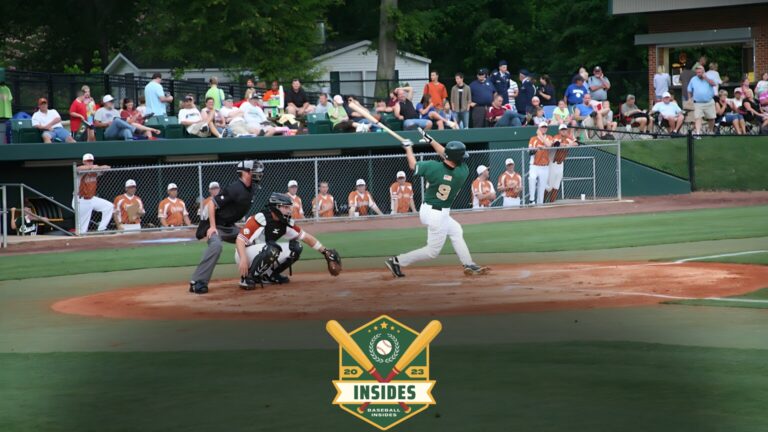
In this article:
Some baseball cards are worth significant amounts, especially rare and well-preserved vintage cards. The value hinges on rarity, condition, player popularity, and age.
Baseball cards, a staple of Americana, have captivated collectors for over a century. Their value can range from just a few cents for common modern cards to millions of dollars for the rarest vintage gems.
Collecting baseball cards started as a hobby in the late 19th century, with tobacco and confectionery companies including them in products to boost sales.
Today, the market for baseball cards is both nostalgic and lucrative, attracting a diverse array of collectors and investors.
Among notable cards are the 1909 T206 Honus Wagner and the 1952 Topps Mickey Mantle, which have fetched record-breaking prices at auctions.
To determine the worth of a baseball card, enthusiasts consider the card’s condition, graded on a scale from poor to gem mint, its scarcity, and the legacy of the featured player.
The Vintage Baseball Card Craze
The allure of vintage baseball cards has surged, transforming dusty collections into potential goldmines.
Nostalgia and rarity drive the value, making old baseball cards highly sought-after by enthusiasts and investors alike.
Step into the world of vintage baseball cards. It’s a realm where history and nostalgia meet hard cash.
Collectors and investors buzz over rare finds from bygone eras. Cards featuring legends like Babe Ruth and Ty Cobb evoke emotions.
They share stories from America’s pastime in a way that stats and records alone cannot. Their value goes beyond the cardboard they’re printed on.
Factors Influencing Card Values
Several key factors determine how much a baseball card is worth:
- Age: Generally, older cards fetch higher prices.
- Condition: Mint condition cards are more valuable than damaged ones.
- Rarity: Cards produced in small quantities are often more sought after.
- Historical significance: Cards of famous players or notable events are more prized.
- Market demand: Popular players’ cards carry a premium.
Understanding these factors helps collectors assess a card’s potential value.
Iconic Cards and Their Stories
Some vintage baseball cards are legendary. They have fascinating stories to match their eye-watering valuations.
| Card | Player | Story | Value |
|---|---|---|---|
| 1909 T206 | Honus Wagner | Known for its scarcity and Wagner’s fame. | Millions |
| 1952 Topps #311 | Mickey Mantle | A symbol of the post-war baseball era. | Hundreds of thousands to millions |
| 1914 Baltimore News | Babe Ruth | Ruth’s rookie card is extremely rare. | Millions |
Each of these cards tells a story. A story about the player, the era, and the game.
Modern Cards: A New Era of Collecting
Collecting baseball cards has evolved. Today’s cards are not just simple collectibles. They are investments.
The modern era of baseball cards is marked by cutting-edge technology and rising stars. These factors significantly impact a card’s worth.
Technology’s Role in Valuation
Technology has revolutionized card collecting. Advanced printing techniques create stunning visuals.
Unique serial numbers make cards easily trackable. Authentication processes are now more reliable thanks to digital tools.
- High-Resolution Scanning: Details and flaws are clearer than ever.
- Online Marketplaces: Collectors buy and sell cards globally.
- Mobile Apps: Quickly check a card’s current market value.
Emerging Stars and Investment Potential
Rookie cards of emerging stars hold great potential. A player’s on-field success can skyrocket a card’s value.
Investors watch new talent closely. They know that today’s rookies could be tomorrow’s legends.
| Player | Rookie Year | Investment Grade |
|---|---|---|
| Juan Soto | 2018 | A+ |
| Fernando Tatis Jr. | 2019 | A |
| Ronald Acuna Jr. | 2018 | A |
Condition Matters: Grading The Paper Gold
Baseball cards can be like buried treasure in your attic. Yet, their true value lies in their condition.
‘Condition Matters: Grading the Paper Gold’ dives into why a card’s state is vital. It’s not just a piece of cardboard; it’s potential gold, and grading uncovers that worth.
The Grading Process Explained
Grading is a precise evaluation to determine a card’s quality. Experts check cards for everything from bent corners to printing imperfections.
They use a 10-point scale, where a ’10’ means the card is flawless. Each card receives a score dictating its condition. A high score means a card could be exceedingly valuable.
- Check corners and edges for wear and tear.
- Assess the surface for scratches or indents.
- Examine the centering of the print.
Impact of Condition on Market Value
Condition heavily influences market value. A slight difference in condition can mean huge price variances.
For instance, a card graded ‘9’ can be worth thousands, while a ‘5’ might fetch pennies. Collectors prize cards are in mint condition. The table below compares the value impact based on grading:
| Grade | Condition | Estimated Value Increase (%) |
|---|---|---|
| 10 | Gem Mint | 100% |
| 9 | Mint | 75% |
| 5 | Very Good | 20% |
| 1 | Poor | 0% |
A card’s grade helps buyers and sellers agree on fair prices. Impeccable cards earn top dollar. More average grades fetch modest sums.
Knowing the grading scale is crucial for making smart investments in the baseball card market.
Where to Find and Buy Valuable Cards
Capturing a piece of sports history, baseball cards stir nostalgia and can be worth a lot. Discerning collectors and enthusiasts often seek the thrill of finding these treasures.
The hunt for valuable cards takes them to various places. Some locations offer better chances of snagging an invaluable piece to add to or start a collection.
Navigating Auctions and Online Marketplaces
Auctions and online marketplaces are treasure troves for rare cards. They provide access to a vast selection of options.
Here’s how to navigate these platforms:
- Register on reputable auction sites or online marketplaces.
- Research past sales for price trends on sought-after cards.
- Set a budget to avoid overspending in the heat of bidding.
- Check the seller’s rating and reviews for credibility.
- Inspect card conditions through images and descriptions.
- Secure purchases with trusted payment methods for protection.
The Role of Local Hobby Shops
Local hobby shops play an essential role in the card-collecting community. These shops are much more than just places to buy cards.
They offer unique benefits:
- Friendly Staff: Gain valuable insights and tips from experienced staff.
- Community: Connect with other collectors and share knowledge.
- Live Quality Check: Physically examine cards before purchasing.
- Rare Finds: Discover cards that might not be available online.
- Events: Participate in trading events and card shows.
Turning a Hobby Into An Investment
Collecting baseball cards can be more than just a fun pastime. It could turn into a smart investment. Many people do not realize the potential financial gain.
To make serious money, they need the right strategy. Let’s dive into how to make this hobby pay off.
Strategies for Building a Valuable Collection
Focusing on rarity and demand is key to building an appreciated collection. Here are some top strategies:
- Research extensively to understand what makes certain cards valuable.
- Invest in grading to confirm the condition of your cards.
- Look for rookie cards, as they can be the most sought-after.
- Consider the historical significance of the players and cards.
- Stay updated on market trends and player performances.
Networking with other collectors can also offer hidden gems and opportunities.
When to Hold or Sell
Timing is everything in turning a collection into profit. Monitor the value of your cards and decide when the market is right. Here’s a simple guide:
| Hold If: | Sell When: |
|---|---|
| Player is active and excelling | Player retires on a high note |
| Market is down | Card value peaks |
| Card’s rarity is increasing | Personal financial need |
Watching the industry trends can give insights. Attending auctions shows the high-end market scene.
The Future of Baseball Card Collecting
Baseball card collecting has a grand past, and its future looks just as exciting. Technology and market shifts shape this hobby constantly.
Collectors and investors watch closely as cards increase in value. The thrill of the hunt for rare cards continues to capture the hearts of many.
Predicting Trends In Baseball Card Value
Forecasting the value of baseball cards is not simple. Many variables come into play. Look at a few key pointers:
- Player performance boosts card prices.
- Rarity and condition play a crucial role.
- Historic moments can increase a card’s worth.
Experts study past movements to predict the future. Market demand often follows trends in the sport itself.
| Factor | Impact on Value |
|---|---|
| Player Achievements | Positive |
| Card Scarcity | High |
| Economic Conditions | Variable |
The Digital Transformation in Collecting
The digital realm reshapes how we collect. Physical cards now have digital versions. Blockchain and NFTs (Non-Fungible Tokens) create digital scarcity.
Digital collecting platforms offer convenience. They also provide a global reach. Collectors can buy, sell, or trade cards anytime, from anywhere.
Consider Topps, a major card manufacturer. They have moved into the digital space. This signals a shift towards a more tech-driven hobby.
Traditional cardboard might share its throne with digital collectibles in a digital era.
Frequently Asked Questions
How Do I Know My Baseball Cards Are Worth Money?
Check your baseball cards’ value by considering their condition, rarity, age, and demand. Refer to price guides, attend card shows, or consult a reputable dealer for accurate assessments. Online marketplaces may also provide current selling prices.
Which Baseball Cards Are Worth Value?
Vintage baseball cards, especially pre-war issues, and iconic rookie cards typically hold the highest value. Names like Mickey Mantle, Honus Wagner, and Babe Ruth are worth considerable. Limited editions and cards in mint condition also command premium prices.
Are Baseball Cards From the 80s And 90s Worth Anything?
Most baseball cards from the 80s and 90s are not highly valuable due to mass production. Certain rare cards and error cards can be exceptions, potentially worth significant amounts to collectors.
What Years Are Baseball Cards Worthless?
Many baseball cards from the late 1980s and 1990s are considered worthless due to overproduction. These years, often called the “Junk Wax Era,” led to a market oversaturated with cards, diminishing their value.
How Valuable Are Vintage Baseball Cards?
Vintage baseball cards, especially pre-war rarities or iconic issues, can be highly valuable, often reaching five to six figures at auction.
Conclusion
Wrapping up, the value of baseball cards can vary greatly. Rarity, condition, and player legacy are key. It’s a mix of market trends, history, and personal sentiment.
For serious collectors or casual hobbyists, understanding this ecosystem is crucial. Always research before investing in these nostalgic treasures.






